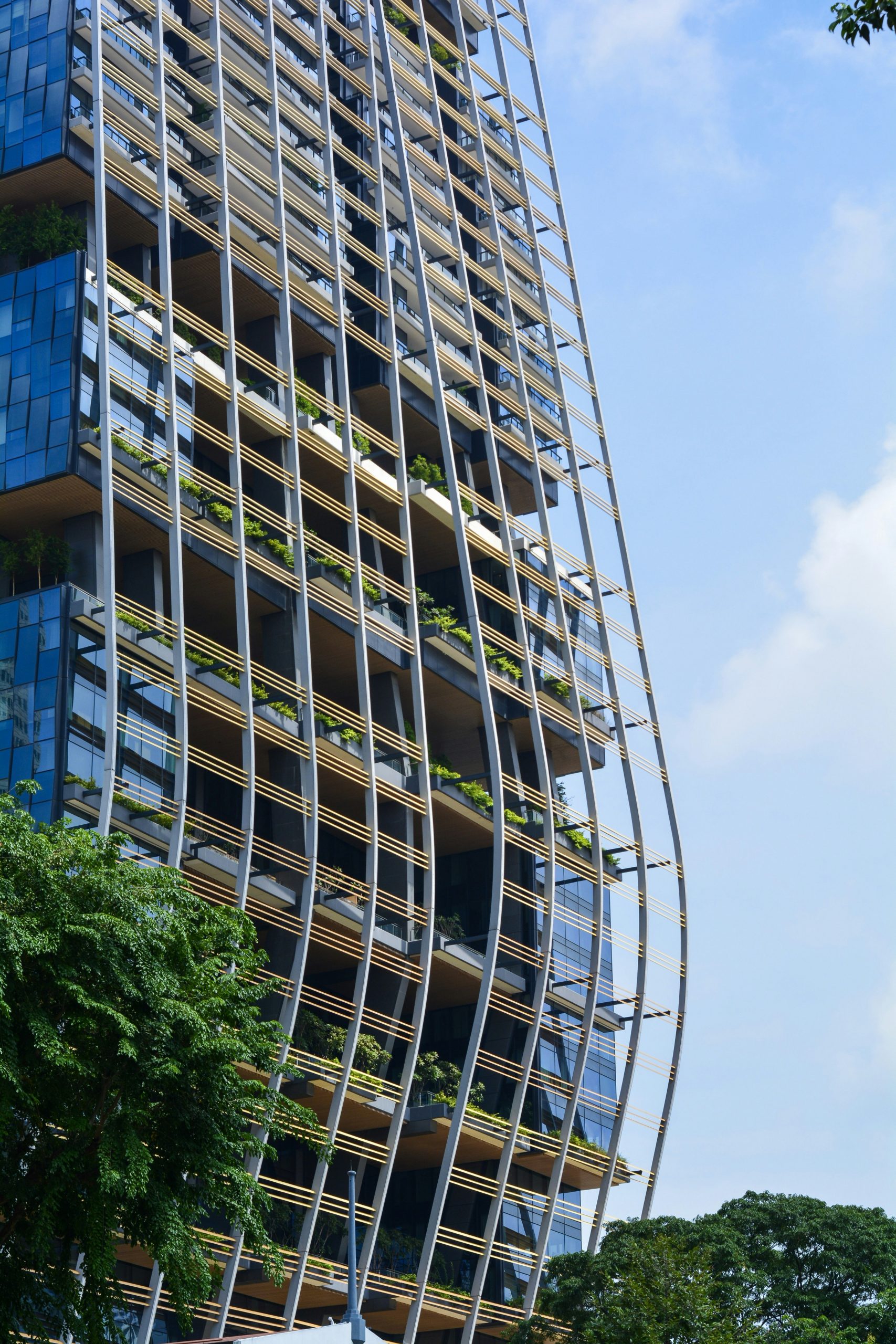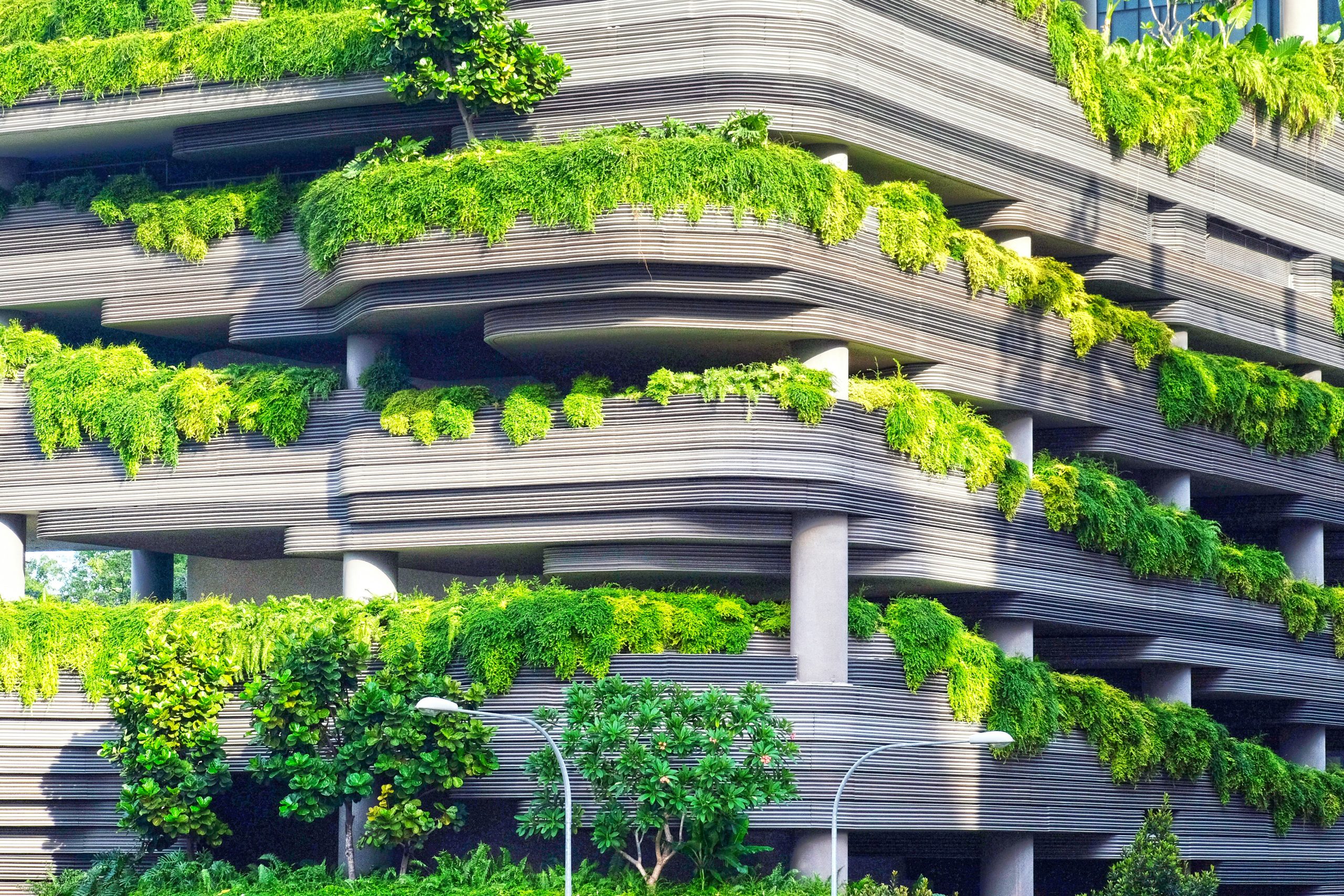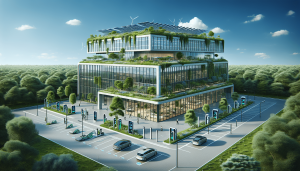Let’s delve into how sustainable architecture strengthens our resilience to natural disasters. In this article, we’ll explore the remarkable ways in which eco-friendly design principles not only minimize environmental impact but also bolster our ability to withstand and recover from natural calamities. From innovative building materials to smart design strategies, sustainable architecture offers a robust framework that enhances the durability and adaptability of our communities. By embracing these practices, we can create safer, more resilient spaces that protect and empower us in the face of nature’s challenges. Have you ever wondered how sustainable architecture can help communities stand firm against the forces of nature? With natural disasters becoming more frequent and severe due to climate change, it’s an important question for us to explore together.
How Does Sustainable Architecture Improve Resilience to Natural Disasters?
Sustainable architecture isn’t just about reducing our carbon footprint or creating energy-efficient buildings, although those aspects are certainly important. It’s also about designing structures and systems that can withstand and adapt to environmental stresses. In essence, it’s about building resilience.

Understanding Sustainable Architecture
First things first: what do we mean by sustainable architecture? Sustainable architecture is an approach to building that minimizes harmful impacts on the environment and human health. This can include optimizing energy efficiency, using eco-friendly materials, and considering the entire lifecycle of the building.
Sustainable buildings often feature:
- Energy-efficient systems: Solar panels, wind turbines, and geothermal heating and cooling systems.
- Water conservation: Rainwater harvesting and low-flow plumbing fixtures.
- Eco-friendly materials: Recycled and locally sourced materials.
- Green spaces: Rooftop gardens, green walls, and urban forests.
But how do these features relate to resilience in the face of natural disasters?
The Relationship Between Sustainability and Resilience
Resilience in architecture means a building can endure and recover from catastrophic events like earthquakes, floods, hurricanes, and wildfires. Sustainable architecture inherently emphasizes resilience in its designs for several reasons:
- Resource Efficiency: Efficient use of energy and water can be crucial during a disaster when utilities may fail.
- Material Choice: Durable, sustainable materials are often more resistant to elements.
- Flexibility: Sustainable designs are often adaptable to future changes and unexpected events.
- Minimized Environmental Impact: By reducing carbon footprints and other ecological impacts, we mitigate factors contributing to climate change, which exacerbates natural disasters.
Resilience to Specific Natural Disasters
Here let’s break down how sustainable architecture helps us become more resilient to specific types of natural disasters.
Earthquakes
Earthquakes can be devastating, causing extensive damage to buildings and infrastructure. Here’s how sustainable architecture can make a difference:
| Sustainable Feature | Role in Earthquake Resilience |
|---|---|
| Seismic Design | Includes shock absorbers, base isolators, and flexible structures that absorb seismic energy. |
| Material Choice | Using sustainable materials like bamboo and engineered wood, which have high tensile strength. |
| Energy Efficiency | Solar panels and energy storage systems ensure power supply even if the grid goes down. |
| Modular Construction | Modular buildings can be repaired or replaced more easily and quickly. |
Floods
Flooding can cause immense damage and disruption. Sustainable architecture mitigates this risk through various design strategies:
| Sustainable Feature | Role in Flood Resilience |
|---|---|
| Elevated Structures | Buildings designed with elevated foundations or built on stilts to avoid water damage. |
| Permeable Surfaces | Materials and landscaping that allow water to permeate the ground, reducing runoff. |
| Rainwater Harvesting | Systems to capture and reuse rainwater, reducing strain on stormwater systems. |
| Wetland Integration | Use of natural wetlands around structures to act as a buffer and absorb floodwaters. |
Hurricanes and High Winds
Hurricanes bring both strong winds and heavy rain, posing a dual threat. Here’s how sustainable architecture can address these challenges:
| Sustainable Feature | Role in Hurricane and Wind Resilience |
|---|---|
| Aerodynamic Design | Creating curved or tapered structures to reduce wind pressure on the building. |
| Reinforced Construction | Using materials and technologies that reinforce walls, roofs, and windows against high winds. |
| Stormwater Management | Advanced drainage systems to handle heavy rain associated with hurricanes. |
| Resilient Roofing | Green roofs with deep root systems that can better endure wind storms compared to traditional roofs. |
Wildfires
With increasing wildfire activity, particularly in areas like the western United States and Australia, designing buildings to withstand fire is crucial:
| Sustainable Feature | Role in Wildfire Resilience |
|---|---|
| Fire-resistant Materials | Use of non-combustible materials like stone, brick, and certain metal alloys. |
| Defensible Space | Landscaping design that creates buffer zones to keep fire from reaching the building. |
| Water Supply | Integrated water systems, including rainwater harvesting, for firefighting and landscape maintenance. |
| Smart Landscaping | Use of fire-resistant plants and strategic planting to reduce the fire spread. |
The Economic Benefits of Sustainable and Resilient Architecture
One of the misconceptions about sustainable architecture is that it’s prohibitively expensive. While it’s true that the initial costs can be higher, the long-term benefits often make up for the initial investment, particularly in terms of resilience to natural disasters.
Sustainable buildings:
- Reduce Operational Costs: Efficient systems for energy, water, and waste can significantly reduce operating expenses.
- Lower Insurance Premiums: More resilient buildings often qualify for lower insurance rates.
- Increase Property Value: Green and resilient buildings are becoming more attractive to buyers and investors.
- Reduce Repair Costs: Buildings designed to withstand natural disasters incur less damage and lower repair costs.

Community and Environmental Benefits
Building sustainably has far-reaching benefits beyond individual properties. When we design with resilience in mind, we contribute to more robust, thriving communities.
Enhanced Community Resilience
Sustainable and resilient buildings help ensure that communities can bounce back more quickly after disasters. Essential services like hospitals, schools, and emergency response centers are more likely to remain operational, supporting the community in times of need.
Ecological Restoration and Preservation
By integrating natural elements into architectural designs, we help preserve and restore ecosystems. This can include creating green roofs that support urban wildlife, using native plants to restore local habitats, or designing water systems that protect nearby wetlands and rivers.
Case Studies in Sustainable and Resilient Architecture
To better understand the real-world application of these principles, let’s look at some case studies.
The Bullitt Center in Seattle, Washington
The Bullitt Center is a prime example of sustainable architecture with resilience in mind. Dubbed the “greenest commercial building in the world,” it incorporates numerous features that improve both sustainability and resilience:
- Energy Independence: Solar panels provide all the energy needs, ensuring the building can function off-grid.
- Water Management: Rainwater harvesting and composting toilets reduce water usage and dependency on municipal systems.
- Earthquake Resistant: Built with a steel structure designed to withstand significant seismic activity.
- Healthy Materials: Uses non-toxic, environmentally friendly materials, reducing the impact of potential building material failures in a disaster.
The Edge, Amsterdam
The Edge in Amsterdam is another excellent example. It’s not only highly sustainable but also designed with future resilience in mind:
- Energy Positive: Produces more energy than it uses, thanks to solar panels and other energy-efficient technologies.
- Smart Systems: Integrated smart building systems that monitor and manage energy and resource use in real-time.
- Structural Integrity: Built to endure European storm activity and designed to be adaptable to future climate changes.

Future Trends in Sustainable and Resilient Architecture
Looking ahead, several exciting trends are shaping the future of sustainable architecture with a focus on resilience:
Biophilic Design
Integrating natural elements into architecture isn’t just about aesthetics. It’s about building in harmony with nature, which can improve resilience. For example:
- Natural Ventilation: Reduces the need for HVAC systems and keeps buildings habitable during power outages.
- Water Features: Natural ponds and streams can help manage stormwater and reduce flood risks.
- Green Infrastructure: Rooftop gardens and green walls improve insulation and provide natural cooling.
Circular Economy in Construction
The concept of the circular economy is making its way into the construction industry. This means:
- Recycling and Reusing Materials: Reduces the demand for new resources and minimizes waste.
- Design for Deconstruction: Buildings designed to be easily dismantled, with materials reused in new projects, which is particularly useful for disaster recovery.
Climate-Adaptive Design
Adapting buildings to the local climate is becoming increasingly important:
- Dynamic Facades: Building exteriors that change in response to weather conditions, improving energy efficiency and resilience.
- Passive Solar Design: Using the sun’s position to optimize heating and cooling, reducing dependency on mechanical systems during a disaster.
Practical Steps for Implementing Sustainable and Resilient Architecture
For those of us looking to be part of this movement, here are some practical steps:
Start Small
Implementing sustainable and resilient practices doesn’t have to be overwhelming. Start with small changes, such as:
- Energy Efficiency: Swap out traditional light bulbs for LED ones and install smart thermostats.
- Water Management: Use low-flow fixtures and start a rainwater collection system.
- Sustainable Materials: Opt for recycled or locally sourced materials in your next renovation project.
Consult Professionals
Engaging with architects and building professionals who specialize in sustainable and resilient design can provide valuable insights and ensure the best results for your project.
Invest in Education
Stay informed about the latest trends and technologies in sustainable architecture. Consider taking courses or attending workshops on the subject.
Challenges and Solutions
Certainly, promoting and implementing sustainable and resilient architecture comes with its challenges. Here are some of the common challenges and potential solutions:
Cost Concerns
Challenge: Initial costs can be higher for sustainable technologies and materials.
Solution: Focus on long-term savings and return on investment. Energy savings, lower maintenance costs, and potential insurance discounts can offset the initial expenditure.
Regulatory Hurdles
Challenge: Existing building codes and regulations may not support or prioritize sustainable practices.
Solution: Advocacy and collaboration with local governments to update regulations. Participate in community planning and get involved in shaping future building codes.
Lack of Awareness
Challenge: Not everyone is aware of the benefits or methods of sustainable architecture.
Solution: Education is key. Engage in community outreach, workshops, and partnerships to spread awareness.
Conclusion
Sustainable architecture isn’t just a catchphrase or a trend; it’s a necessity for creating resilient communities in the face of increasing natural disasters. By focusing on efficient resource use, durable materials, and adaptable designs, we can create buildings that not only stand the test of time but also provide safer, healthier environments for people and nature alike.
We hope this exploration has inspired you to consider the profound impact sustainable architecture can have on resilience to natural disasters. Join us in advocating for and implementing these practices for a greener, more resilient future. Let’s build a world together where our communities can thrive, no matter what challenges Mother Nature throws our way.



